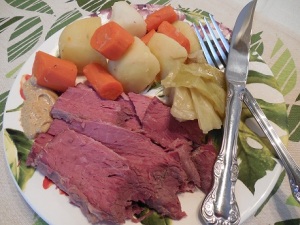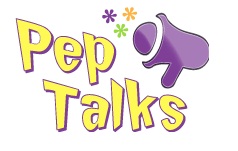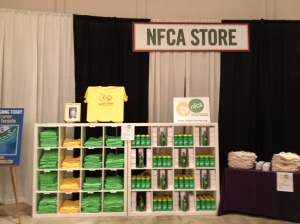Posts tagged ‘family’
Gluten-Free Corned Beef and Cabbage Dinner
The following guest post is from NFCA volunteer Annette Marie of Best Life Gluten-Free.
Here we go! Make this for the whole family, those who are gluten-free as well as everyone else: Gluten-Free Corned Beef and Cabbage Dinner!
Here in the USA, we typically see Corned Beef Brisket sold in supermarkets just around St. Patrick’s Day, but some specialty markets will carry it all year round. So, if you’re spotting it during May or September, grab it & know you’re a lucky one! Make this dinner and savor the flavors many times over and over. It’s easy to prepare, don’t be intimidated by the time element. It mostly does all the work while it’s simmering along. Let’s get you started.
Gluten-Free Corned Beef and Cabbage Dinner
Serves 4 to 5
Prep time: 20 min.
Cook time: 3 hrs.
Ingredients:
- 2 to 2 ½ lbs. gluten-free corned beef brisket
- 2 garlic cloves, peeled and smashed.
- 3 carrots, peeled and sliced into big chunks; about 2 in. long
- 1 large yellow onion, sliced in quarters
- 5 potatoes, peeled of skin (I used 3 medium sized Yukon Golds and 2 medium sized Red Potatoes, just to have both flavors and tastes in there.)
- 1 cabbage, cut into quarters or fifths (Leave spine attached or it will fall apart while simmering.)
- 2 bay leaves
- 10 peppercorns (Leave whole, don’t crush)
- Dash of thyme
- 1 Tbsp. Salt
- Few parsley sprigs
- Water, enough to to cover meat well.
- Mustard (for serving at meal time as a garnish. A must for everyone I know!)
Directions:
(It’s easy, so please don’t be discouraged!)
- Remove meat from packaging and briefly rinse under water .
- Take a large pot or Dutch oven and place meat inside. Add enough water to cover it well. Don’t skimp on the water, since it will be simmering for a long time. Cover it by approximately 2 inches.
- Throw in (well, not literally,) the bay leaf, parsley, salt, peppercorns and thyme. Cover and bring to a boil. When you see it’s come to a boil, lower heat and simmer for 2 hrs. Occasionally, check to be sure it’s simmering on a light boil and after 1 hour, using 2 large spatulas or spider tool, gently turn over to reverse side. Be gentle. It’s getting very soft.
- After 2 hours, stick a fork or knife in the meat and it should be very tender and pierce right through. Using that spider tool or spatulas, remove to a large platter and cover meat with foil.
- Add all of the vegetables to that pot and simmer for ½ hour. Veggies will be getting nice and soft, soaking up the flavors of that “broth.”
- Re-position meat into the pot for another 15 minutes to reheat.
- Remove meat to a carving board and slice to the thickness you prefer.
- Serve on a large platter with the veggies along-side and provide your favorite type of mustard to accompany each bite. You can drizzle a little of the broth on top of the slices if you like. So good. Get ready for the compliments!
– Annette
10 Easy Ways to Celebrate Celiac Awareness Day 2013
Raising awareness is a prime focus here at the National Foundation for Celiac Awareness (NFCA). So, you can image that we have lots of ideas for raising celiac disease awareness every day, but especially on Friday, September 13 – Celiac Awareness Day.
Even if you are short on time, we have ideas that will have a big impact if we all work together. Check out our 10 suggestions for raising celiac disease awareness:
Share the Celiac Disease Symptoms Checklist
Did you know 83% of the estimated 3 million Americans living with celiac disease are still undiagnosed or misdiagnosed? You can help put these people on the path to diagnosis by sharing the Celiac Disease Symptoms Checklist. Share it on social media or print it out and hand it to a friend, coworker or family member.
Provide your insight for parents of gluten-free kids.
Maybe your child has been diagnosed with celiac disease or non-celiac gluten sensitivity (‘gluten sensitivity’) for a while. Perhaps you have a newly diagnosed child, but found a great trick for making things easier for them and yourself. Either way, share your tip with NFCA for the Back to School Gluten-Free Tip series. When you do, you’ll automatically be entered to win two mixed cases of Crunchmaster Cheezy & Grammy Crisps. Grab all the details here.
Try a new recipe.
Cook something new for dinner this weekend. Not only will this help you find additional recipe options, but if you share it with a friend, you’ll be proving just how delicious gluten-free can be.
Wear green.
Show your support by wearing green – green pants, shirt, shoes, nail polish, hair ribbon, socks, whatever! If you’re feeling extra adventurous, upload a picture of you and your friends wearing green to NFCA’s Facebook page. We’ll add it to our “Wear Green” photo album.
Help get the facts out there.
NFCA has a section for printable guides. Consider printing a few, like the “What is Celiac Disease?” information sheet, and leave them at your doctor’s office or favorite local store.
Use a hashtag.
Wouldn’t it be cool if we got #celiacawareness trending on Twitter? Tweet a celiac disease statistic to spread the word to your followers. Feel free to give NFCA a shout out at @CeliacAwareness, too!
Donate or make a purchase in honor of Celiac Awareness Day.
At NFCA, we appreciate every donation we receive, whether it’s for $10 or $1,000, it truly makes a difference in our ability to provide free programs and services to people living with gluten-related disorders. If you live in the Philadelphia area, consider attending our 10 Year Anniversary Celebration, a fundraiser for the organization. If you can’t attend, you can always share the details with someone you know.
Some organizations, like Scent-Sations, make a donation to NFCA when one of their products are purchased. More details can be found here.
Talk to your family about celiac disease testing.
Since celiac disease is a genetic autoimmune disease, meaning that it runs in families, it’s important for family members to get tested, whether they have symptoms or not. Raise awareness in your family by sharing the facts. We have some tools to help you get the conversation started.
Make sure you are up to date on the latest celiac disease news and research.
Researchers are working hard to better understand various aspects of celiac disease. Visit NFCA’s Research News Feed to stay up to date on their findings and check in periodically with the Drug Development and Clinical Research page to see how you can get involved in advancing research.
The U.S. Food and Drug Administration (FDA) officially ruled on gluten-free food labeling. Learn what it means for you and your family by registering for the free NFCA webinar, “Understanding the FDA’s Gluten-Free Labeling Rule: What You Need to Know.” NFCA will also compile an informational sheet with key details from the webinar in the weeks following the live airing. If you can’t make it, don’t worry! Just register for the webinar and we’ll e-mail you a link to the archived version when it becomes available.
Share your ideas with NFCA.
These are just some of the many ways we can all work together to raise awareness. Tell us how you’re celebrating! Leave a comment on this blog, tweet us at @CeliacAwareness or drop us a line on our Facebook page.
Thanks for reading! I can’t wait to hear everyone’s ideas. Happy Celiac Awareness Day!
– Alicia
National School Lunch Week: School Nutrition Consultant Talks Gluten-Free
Last August, the National Foundation for Celiac Awareness (NFCA) hosted a back-to-school webinar with Gabriela Pacheco, RD, LD, SNS, a school nutrition consultant with expertise in specialty diet accommodations. In honor of National School Lunch Week, we decided to circle back with Gabriela and get some more tips on how parents and schools can work together to provide gluten-free school lunches to celiac and gluten sensitive students.
 NFCA: What is the biggest challenge schools face in offering gluten-free options? Is it the cost? Not enough demand? Staff training?
NFCA: What is the biggest challenge schools face in offering gluten-free options? Is it the cost? Not enough demand? Staff training?
Gabriela Pacheco (GP): All of those challenges happen and are different in every district.
Staff training is certainly the biggest challenge. With or without a diet prescription, the foodservice staff must understand proper label reading and handling of all foods. This is especially challenging when a reaction to cross-contamination can have serious effects on the student.
Cost can be a challenge in some districts because the school cannot pass on the extra expense to the student. In other words, if a student gets free, reduced, or pays full price for school meals, the school cannot charge them for the extra expense to make the special meal.
The demand “should” not be an issue. One child or 100 students should be treated the same. However, some districts may push back if there is only one student or a few students needing the special meal. The U.S. Department of Agriculture (USDA) states that if a student has a food intolerance or allergy, the school can – but does not have to – modify meals, unless it is a life-threatening reaction such as anaphylaxis. It all lies on the diet prescription from a certified medical authority; if the diet prescription states that meals must be modified, then the district has no choice.
With or without a diet prescription, if the school nutrition staff works with parents of students with celiac disease or non-celiac gluten sensitivity, they demonstrate support of a segment of the community by helping them improve their quality of life and concentrate on school – not stress about food.
NFCA: What are some schools meals that meet the new USDA nutrition guidelines and are gluten-free?
GP: USDA – The National School Breakfast and Lunch Program ensures that your child eats a healthy meal, including meals for children with special dietary needs. Although a gluten-free diet limits some food options, schools can put together kid-friendly school meals. Having a diet different from that of his/her friends may cause your child to feel singled out. Get him/her and yourself involved with cafeteria staff to go over food preferences to make him/her feel more comfortable about school meals.
School meals must meet new meal pattern requirements, which include fruits and vegetables at every meal, as well as a meat/meat alternate (protein source), legumes, fluid milk and whole grains. Gluten-free foods include fruits, vegetables, poultry, fish, beef, nuts, eggs and more. Schools already have these onsite; however, preparation is the key. Purchasing gluten-free bread, for example, can be the only substitution the student requires to have a lunch which looks the same as his friends. Along with a side salad, a fruit and milk, the meal is complete!
Most schools now have salad bars that contain a wide variety of items such as kidney beans, fresh fruits and vegetables, cottage cheese, and some even have the protein available there to make a complete meal. Add milk and again, a complete meal. The student just has to make sure to watch the salad dressings or anything else which may have been cross-contaminated. If the student is old enough, they learn what to choose. If still young, a teacher or cafeteria staff can help with the salad selection.
There are several manufacturers who make gluten-free items specifically for schools. One good resource is Rich Products. They make pizza dough and other items that will fit into the school meals and meet guidelines.
NFCA: How can schools be more welcoming to special dietary needs? Should they post the information on their website? Ask the foodservice director to speak at parents’ night?
GP: Both of those options are a great start. The first step is to consider the needs of the student. Second, it really takes a lot of teamwork. The school nutrition department, the parents and the student should all be involved. Forming partnerships is key. Many districts already post carbohydrate counts/exchanges, PKU diets, etc. – why not add gluten-free options?
Keep in mind that they are not required to post gluten-free options, which is why communication is important. Asking for the menus so parents can go over it with their child and circle meals they like also helps. The cafeteria staff can then work with the student on proper gluten-free exchanges. This way, the meal is not so “special” and different from other students.
NFCA: What advice do you have for parents who are reluctant to contact the school about their child’s gluten-free needs? How can they approach the conversation with confidence?
GP: The first place to go is the foodservice/nutrition director. The cafeteria staff can refer you to him/her. Parents can discuss options with the director.
If the student has a diet prescription from a medical authority, then it is especially important that the director ensures the cafeteria staff, your child’s first line of defense, is trained and understands gluten-free diet and modifications. Even without a written medical statement, the school may provide the child with special meals, but is not required to.
Form a partnership with the cafeteria staff and offer to help choose your child’s meals. Remember that they have to order foods from approved manufacturers, so it may be that they have to order from outside vendors to provide gluten-free options. They cannot charge the student more for that meal, so they do have to consider the increased cost. A parent should never hesitate approaching the nutrition department about their child’s needs, but keep in mind that there are regulations.
NFCA: What’s one thing parents can do during National School Lunch Week to advocate for gluten-free needs in the lunchroom?
GP: Parents can form a partnership with the food and nutrition department to send out a newsletter or a side note on the month’s menu regarding children with celiac disease and non-celiac gluten sensitivity, and how the department can help with modifications. School administrators can also benefit from this, as they don’t always understand regulations.
For more articles on this topic, visit NFCA’s Gluten-Free Resources for National School Lunch Week 2012
Going Gluten-Free Before the Diagnosis: Do or Don’t?
Kristin Voorhees, Healthcare Relations Manager at the National Foundation for Celiac Awareness, caught up with renowned celiac researcher, Joseph A. Murray, MD of the Division of Gastroenterology & Hepatology and Department of Immunology at The Mayo Clinic, to discuss the implications of adopting a gluten-free diet prior to being tested for celiac disease. The below is the response from Dr. Murray on the topic.
What do you suggest to people who have put themselves on a gluten-free diet without prior testing?
My general advice is as follows:
If someone feels they might have a problem with gluten, they should seek testing for celiac disease first. It is important that they not ask for a screening for celiac disease, as this is not a diagnostic test and most often not covered by insurance companies. However, if they have complaints, such as abdominal bloating, diarrhea, etc., then this is not a screening test, it is a diagnostic test for the indication of possible celiac disease. The testing should be done before there is any change in diet. If the patient has already changed their diet for a week or two, they should go back on gluten for at least the same length of time. This should be adequate full gluten ingestion, not simply small amounts of gluten in order to reduce the risk that the test will be false negative. For patients who have gone on a gluten-free diet and have been on it for many months and who had quite severe illness before doing so, they may need to consider a gluten challenge but only under medical supervision. There are a couple tests that might be done in patients without a gluten challenge–for example, a genetic test might be helpful—to identify if they do not carry the genetics required for celiac disease. In this circumstance, you can rule out the possibility of celiac disease. Patients will often ask me, “Why bother checking for celiac disease if I feel better on a gluten-free diet? Why do I need to be concerned?” The issues I see are several:
- If the person really has celiac disease, then they need medical follow-up. The disease consists of severe inflammation in the intestine and it is very important to make sure that it heals and it recovers.
- If the person really has celiac disease, then the family members need to be checked for celiac disease as it can commonly occur in other family members, have significant consequences, and frequently is not diagnosed.
- Going on a gluten-free diet is not specific. There are many reasons that going on a gluten-free diet may make people feel better—for example, eating less junk food—and these effects may be temporary and indeed it may be that their symptoms recur despite continuing to try to be gluten-free leading to more diagnostic mystery.
- Delay of other diagnoses. Going on a gluten-free diet, especially if this is tried for several weeks or months, may delay an alternative diagnosis, which sometimes can be a significant illness for which quite different medical therapy is necessary.
- There may be some nutritional deficiencies that can occur on a gluten-free diet, such as less fiber, which can lead to bowel problems such as constipation, some reduction in nutrients that typically added to gluten-free cereals or breads that are not added to gluten-free alternatives.
- There is a substantial increased cost. A particular situation is where the gluten-free diet is essentially imposed on a child without strong evidence for medical necessity. This will lead to problems, especially when the child grows up and finds themselves in many different situations.
What if the patients who had substantial chronic symptoms, were tested for celiac disease, were found to be negative, and went on a gluten-free diet from which they have derived some substantial benefit?
They may well have non-celiac gluten sensitivity. In order to fulfill the definition of this, it is first necessary that celiac disease was checked for and ruled out, secondly that their symptoms have largely or completely responded to a gluten-free diet, and that response is durable—it is not just a short-term placebo response. For such patients, I certainly don’t object to them being on a gluten-free diet if they derive symptoms benefit from it.
Finally, I am concerned about patients who undertake multiple food avoidances for various reasons, and there is an eating disorder called orthorexia where people avoid multiple foods without clear reason why, and often lead themselves in to severe malnutrition. Hopefully, those occurrences are pretty rare, but nonetheless pretty important.
– Joseph A. Murray, MD
Division of Gastroenterology & Hepatology
Department of Immunology
Mayo Clinic
.
5 Ways to Get Your Kid Excited About the Gluten-Free Diet
Starting a gluten-free diet can be challenging for anyone, but kids can have an especially tough time when faced with social situations. It’s hard to tell your little one they can’t have the cake at their friend’s birthday party or that Play-Doh is off limits. With a little imagination and creativity, though, you can get your child excited about the gluten-free diet.
Set Aside Time to Cook Together
Dedicate a few hours a week to trying new gluten-free recipes with your child. The recipes don’t have to be complicated or take a long time to make. Not only will this give you some quality one-on-one time with your little one, but you’ll also teach them how to manage their own gluten-free diet and identify possible gluten sources.
Visit NFCA’s Kids Central to get kid-friendly recipe ideas. Kids Central is also home to the archived webinar, Cooking with Kids, featuring ideas and tips from Jessica Hale of Gluten Freeda.
Get Them Involved
Depending on how old your child is, they might be embarrassed about the gluten-free diet or having special dietary needs. Get them talking about celiac disease or non-celiac gluten sensitivity and help them meet other gluten-free kids. Social networking sites can help them connect with their peers, and you might even get a few new gluten-free recipe ideas from other parents. Miranda Jade Turbin shared tips for social networking in NFCA’s September e-newsletter.
In-person meet-ups can be beneficial for kids because they give them a chance to meet others on a lifelong gluten-free diet. Groups like Raising Our Celiac Kids (R.O.C.K.) host meetings and activities across the country. They’re another great place to get activity ideas.
You can get them talking about the gluten-free diet through NFCA’s Awareness All-Stars fundraiser. Awareness All-Stars gives kids the opportunity to share their experience with celiac and help raise funds to support NFCA’s free programs and services. Plus, every All-Star earns prizes for participating and the top 3 fundraisers (we call them MVPs) get an extra special gluten-free prize.
Gluten-Free Show and Tell
Many kids have special show-and-tell days at school. Why not send them to class with delicious gluten-free cookies or cupcakes to share with their classmates? This will give them a chance to tell all of their classmates about celiac disease and show them how a gluten-free diet can still be tasty. Plus, this lets kids become more comfortable with talking about celiac disease and their dietary needs.

You can get the recipe for these ChocoCoconut Cookies from registered dietitian Rachel Begun on Kids Central.
Arts & Crafts
Traditional Play-Doh contains gluten, but that doesn’t mean your gluten-free kid can’t enjoy the fun. Spend a Saturday afternoon making gluten-free Play-Doh with them. You’ll be giving them a safe alternative while showing them trying out new things can be fun! Check out this recipe for gluten-free Play-Doh from Parents Magazine.
Give Them a “Pep Talk”
Kids Central has a section dedicated to Pep Talks, which features tips from gluten-free kids and NFCA’s staff and Athletes for Awareness. The Pep Talks cover everything from “Being Gluten-Free and Confident” to “Awesome Things Done by Gluten-Free Kids.” In short 5-tip segments, your kid is bound to get a major confidence boost from Pep Talks!
So how do you help your child maintain a positive attitude about the gluten-free diet?
– Alicia
Appetite for Awareness – Truly Philadelphia’s Premier Gluten-Free Food Fest
Appetite for Awareness 2012 is over, but the office is still buzzing with excitement. When you focus on preparing for an event for months and months, you can’t help but feel a sense of relief and happiness over the success of the event.
I joined the National Foundation for Celiac Awareness (NFCA) team back in May, so this was my first time at Appetite for Awareness. Leading up to the event, I attended planning and update meetings and absorbed all the fine details that go into coordinating an event of this size. Last week, NFCA staff and our wonderful event planners, Phyllis and Ed, went over the final plans, and I thought I knew what the event had in store for all its gluten-free guests. I never could have imagined how big Appetite for Awareness really could be, and how much it could mean to the community.
The venue was the Historic Strawbridge Building in Center City, Philadelphia. For those of you who have never seen it, the building is unbelievably beautiful. It used to be the Strawbridge & Clothier building, but was just converted into a venue for special events. It has that historic look to it, with the grand staircase in the back, low hanging, bright chandeliers, and a working fountain in the walkway that divides the massive floor space. On Sunday, tables snaked through the main hall, loaded with vendor tables all handing out gluten-free samples to the 1,500 attendees.
So here’s how Appetite for Awareness goes: You come through the door, grab your NFCA tote bag and start eating! All of the vendors and restaurants get their own table and they serve only gluten-free food. Even better, all of the restaurants in attendance are trained by NFCA’s GREAT Kitchens program, a training course that teaches chefs all the ins and outs of preparing gluten-free food safely. This is what makes Appetite for Awareness so special. From the pasta samples served by the restaurants, to the brews chilling in the beer garden, it’s all gluten-free. There are no questions to ask your server. There are no concerns about cross-contamination, because nothing containing gluten comes through the door. Everyone there knows what the gluten-free diet is and why it’s so important to those living with celiac disease or non-celiac gluten sensitivity. For once, people on the lifelong gluten-free diet can just relax, eat and have a good time without making special preparations, calling ahead or packing their own snacks.
I spent most of the day walking through the Strawbridge building, snapping photos, live tweeting from the event, and doing Twitter giveaways. (Shout out to Amie Valpone of The Healthy Apple & Crunchmaster, Blue Diamond and PJ’s Beef Steak for providing us with the gluten-free giveaway items. You guys rock!)
I didn’t get to try all of the dishes, but from the massive lines of people eagerly devouring their samples while reaching for another one, I know the food was delicious. A returning favorite were the soft pretzels from Tonya’s Gluten-Free Products, which earned rave reviews at Appetite for Awareness 2010, too. I saw people running to go have a pretzel or two (or three or four). Kids were covered in pizza sauce, and sticky fingers were everywhere. It was an awesome sight.
Personally, I was super excited to meet the people that I talk to on social media all the time. I met Erin Smith of Gluten-Free Fun, Amie Valpone of The Healthy Apple, and the Appetite for Awareness honoree himself, Michael Savett of Gluten Free Philly.

Michael accepting his award from NFCA Founder & President Alice Bast. (PS- isn’t that staircase great?)
NFCA honored Michael Savett at the event for his major contributions to the gluten-free community living in the Philadelphia area. When his son was diagnosed with celiac, Michael started teaching restaurants about the gluten-free diet and kept track of the restaurants that could cater to his son’s special dietary needs. Instead of keeping the information to himself, Michael started Gluten Free Philly for everyone in the area to benefit from. A driving force in creating more availability for gluten-free options, NFCA would once again like to thank and congratulate Michael for his efforts.
Check out the tribute video NFCA made (with the help of Michael’s friends and family) to say thank you.
I had a blast at Appetite for Awareness 2012, and based on the tweets and Facebook comments, it seems like everyone who attended agrees. None of this would have been possible without the generosity of our sponsors, the support of the NFCA board and advisory council members, and of course, our amazing volunteers and staff who put in countless hours to make Appetite for Awareness 2012 a fun and safe event for the gluten-free community.
Visit the NFCA Facebook page to see some of my snapshots from the event and stay tuned for the professional photographer’s pictures to come. While you’re visiting the Facebook page, tell us your favorite part of Appetite for Awareness!
There are so many people to thank and recognize for their contributions to Appetite for Awareness, especially Thomas Jefferson University Hospitals, KYW Newsradio 1060, PREIT, Mercedes-Benz of Fort Washington and West Chester. Click here to see all of our amazing sponsors and participating restaurants and vendors.
Thanks to all who came out to make Appetite for Awareness such a memorable event!
– Alicia
Helping Hands—Lots of Them!
It’s time for NFCA’s Appetite for Awareness!
The NFCA Team is very excited about the 2012 edition of this signature event. I can’t wait to see which doctors are paired with which restaurant to prepare and offer true gluten-free delights to our guests. Appetite for Awareness brings out the gourmet in most of us as we table hop between the booths of some of the best restaurants in the Greater Philadelphia area.
Today, I learned that there will be about 60 exhibitors who are ready to highlight the latest gluten-free products and distribute educational materials to all attendees. Add the Beer Garden with flat screen TVs and “the game,” the Children’s Pavilion with games for the whole family, and cooking demos for the Julia Child in each of us, and you have quite an afternoon!
How does the NFCA Team make all of this happen? The short answer is, we don’t. Well, more correctly, we don’t do it alone. Each year, a small army of volunteers puts on their Appetite for Awareness T-shirts and jumps in to help.
Our guests will meet them all, from manning the registration desk to helping at the NFCA Shop to selling tickets for the drawings (including a lease on a Mercedes-Benz!) and much, much more. This volunteer corps is an essential ingredient in the success of each and every Appetite for Awareness that NFCA has held over the years.
This year, over 75 volunteers plus a cadre of students will take the floor to make this the best event ever. Some are first-timers who will be amazed and others are old hands who know the ropes and always are enthusiastic.
If we held a contest for the volunteer who traveled the greatest distance to get to the Historic Strawbridge Building, Cecelia Bonaduce from Baltimore probably would win (plus, she originally hails from California). Most years as an Appetite for Awareness volunteer? Probably Karen Dalrymple and Donna Sawka. Husband and wife teams — Jen and Kenny Arters, Judy and Mike Paul, Eva and Marv Schlanger. More family ties — Patti and Jessica Townsend, Amanda and Sam Beeler, Jody and Bruce Finkel, Sandy and Rachel Cogan, Eileen and Jim Grady. And, organizing this whole team—Julie Cooper. Amazing!
Looking forward to a great time!
– Nancy
























